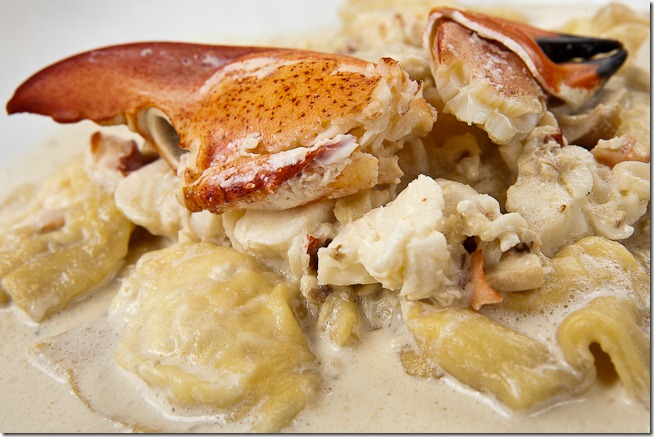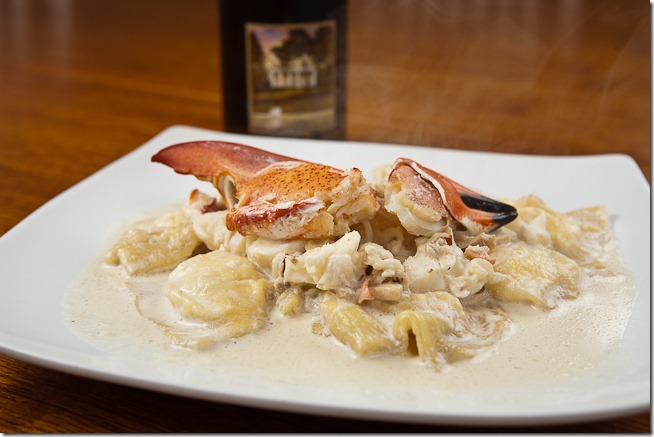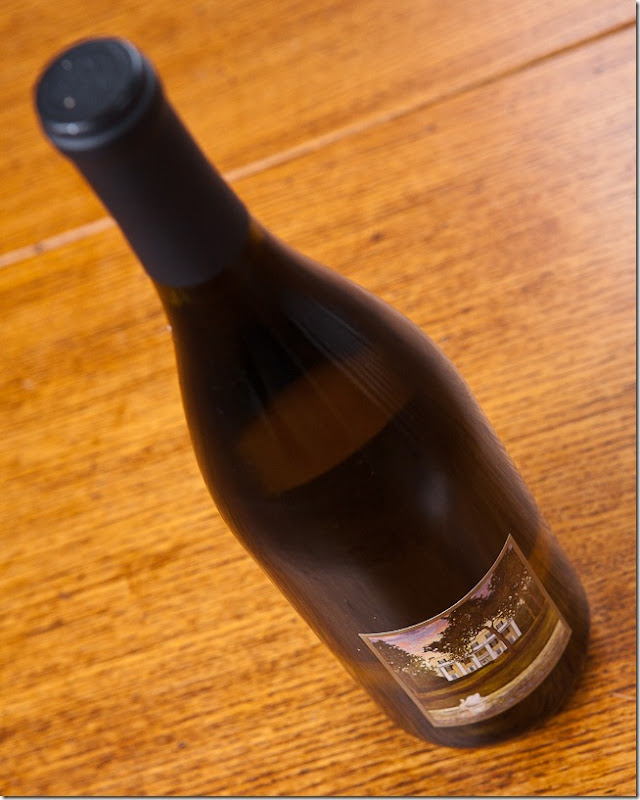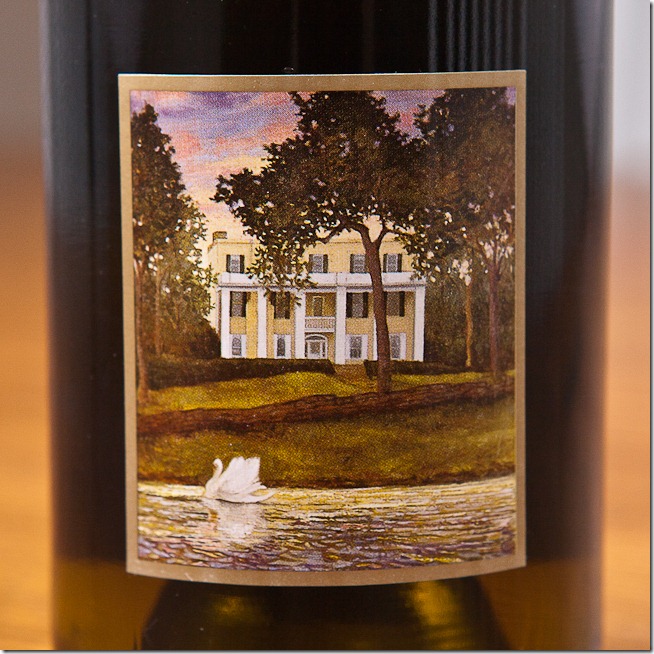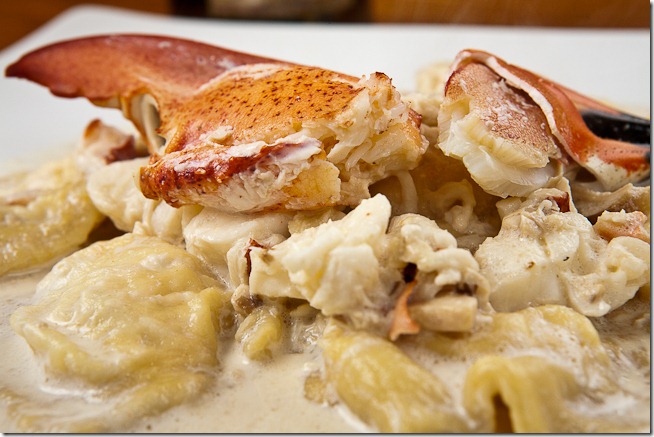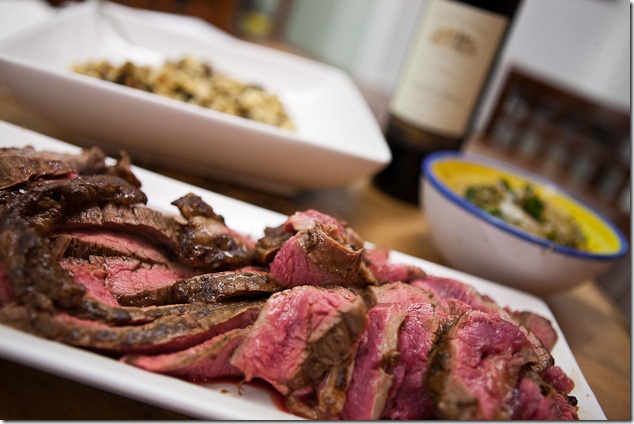
Are you a seasonal wine drinker? I don’t mean seasonal in the sense that there is a season for drinking wine, but rather a season for drinking different types of wine? I am a seasonal wine drinker. Over time, I have found my tastes shifting with the seasons. For example, summer is often filled with Sauvignon Blanc, dry Rieslings, and other light, acidic and refreshing wines. Spring and fall tend toward medium bodied Chardonnays, red blends, and Pinot Noir. During winter, I find myself drinking full bodied reds; Cabernet Sauvignon, Zinfandel, Syrah, and hefty blends.
Although this winter was, and remains ridiculously mild (highs in the low 80s over the last couple of days), I remain in winter drinking wine mode. On top of that, I still have a long line of “winter” wines reserved for wine pairings. I have a lot of work ahead of me before winter is officially ended. With this in mind, I donned my creative culinary tocque and was inspired to create a mole marinated flank steak with white wine cliantro sauce over celery root hash paired with a 2009 Barboursville Vineyards Virginia Reserve Cabernet Franc.
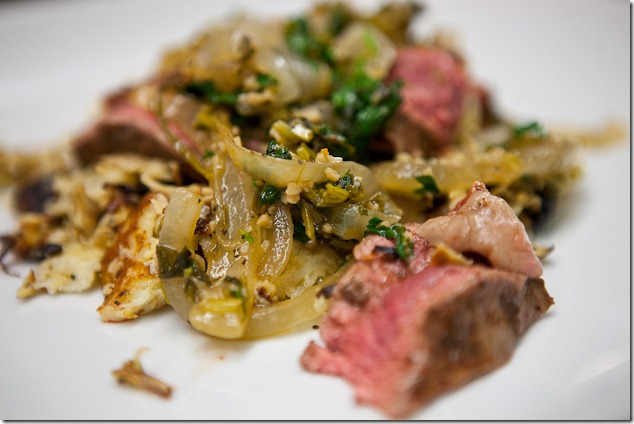
At first blush, this appears to be an odd construction, but let me explain my thought process. As you would guess, the flank steak with a mole marinade features deep rich flavors along with the contrast of strong piquance. For additional balance, I decided to introduce some acid and brighter flavors. A white wine sauce came to mind first, then I added the cilantro to further brighten the flavors while remaining consistent with the Mexican theme. Finally, I completed the dish with a celery root hash. I originally conceived this as celery root pancakes, but in the end went with a “looser” hash approach that worked nicely from a texture perspective.
Admittedly, these flavor combinations are difficult to get your head around. Logically, it kinda-sorta-maybe-works, but up until plating time, I was haunted by fear that I was creating a colossal failure. My fears were little more than creative insecurity. The meal was fantastic, and the combination of contrasting flavors and balance worked better than I could have imagined. Sigh of relief!
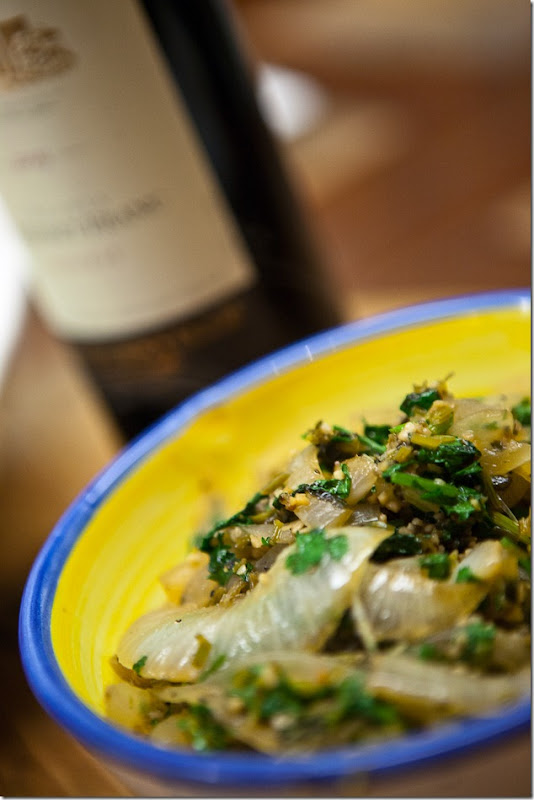
From the start, this recipe was conceived with the 2009 Barboursville Vineyards Virginia Reserve Cabernet Franc in mind. Here are some notes from the winemaker:
“This vineyard’s renown for Cabernet Franc rests on the most consistent critical acclaim for any varietal red wine produced in the Eastern United States, but to be fair, this distinction comes from the ground. We grow the most diversified array of Cabernet Franc clones in the region - 4 from Bordeaux, 1 from the Loire - offering a wine-making palette of matchless permutation and subtlety. At the same time, the vineyard has so well established our Merlot, Petit Verdot, and Cabernet Sauvignon, that the Cabernet Franc Reserve is never less than the most elegant exemplar of the varietal in any vintage. The House red wine at The Inn at Little Washington, it responds to a knowing demand for a characterful, intriguing, and refreshingly well-bred wine for dining, and indeed for conversation with friends who delight in fine wine for its own sake.”
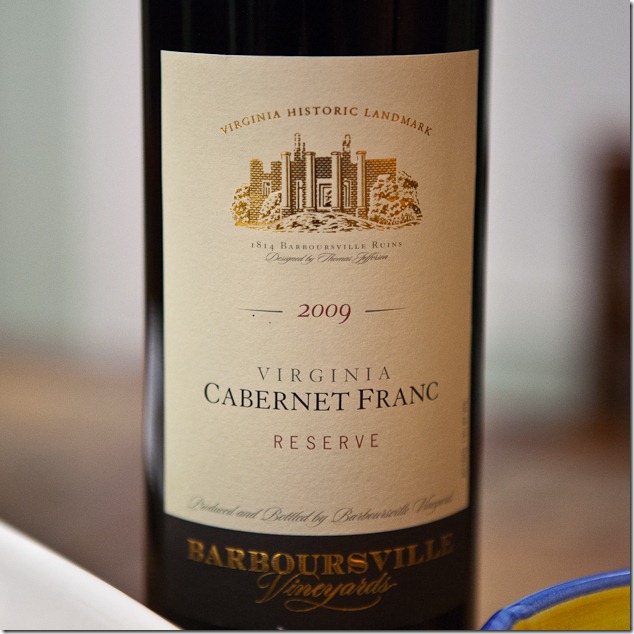
Tasting notes from the winemaker:
“Dark garnet core, brilliant clarity in the glass. Intense, effusively luscious flavors of ripe red berries with caramelised notes of fig, cherry, and plum, elegantly woven together in barrel. Long-finishing and tannically vivid, yet with a remarkably soft palate.”
I would be challenged to improve on these tasting notes. I would only add that “tannically vivid” should be interpreted as you might expect - this wine is not a wilting flower. And as the winemaker states, this wine is very drinkable now, will likely peak in 2013, and will sustain for another three to six years. The boldness of this wine was perfect for the pairing. A lesser wine would not have stood up to the piquance of the mole, and yet play a welcome complementary role to the brighter flavors of the white wine cilantro sauce.
I remain very impressed with each and every bottle I open from Barboursville Vineyards. Their wines are available at their online store, and I encourage you to visit.
Recipes
Mole Sauce
Ingredients
- 4 ½ cups chicken stock
- 3 tablespoons olive oil
- 1 cup finely chopped onion
- 3 tablespoons minced garlic
- 1 teaspoon dried oregano
- 1 teaspoon ground cumin
- ¼ teaspoon ground cinnamon
- 2 ½ tablespoons chili powder
- 3 tablespoons all-purpose flour
- 2 ounces unsweetened dark chocolate, chopped or shaved if you have a few extra minutes
- Sugar to taste
Preparation
- Heat oil in a large saucepan over medium high heat.
- Add onion, garlic, oregano, cumin and cinnamon - sauté until onion is almost tender, stirring occasionally.
- Mix in chili powder and flour, stir for 3 minutes.
Gradually whisk in chicken broth. - Boil until reduced by half, stirring occasionally. Reduce heat to medium low.
- Whisk in chocolate; season with salt and pepper, if desired.
- Whisk in sugar as desired to reach a balance with the heat of the chili powder. This is a matter of taste. I used three tablespoons.
- When cooled, the sauce will thicken.
- Season a 2 pound flank steak with salt and pepper, then generously coat with the mole.
- Place on a plate, cover with plastic wrap and place in the refrigerator for at least one hour. The longer the better. If you have a vacuum sealer, this is the best approach (and the one I use for nearly all marinades).
- Preheat your broiler for a few minutes, place your flank steak on a broiler pan, and sear both sides (3 to 4 minutes).
- Slice into 1/4 inch strips across the grain.
- Serve over celery root hash and top with white wine cilantro sauce.
White Wine Cilantro Sauce
Ingredients
- 2 tablespoons olive oil
- 3 tablespoons minced garlic
- 1 large onion thinly sliced
- 1 1/2 cups dry white wine (a wine with strong acidity like a Sauvignon Blanc is the best choice)
- 1 bunch of fresh cilantro (stems removed and finely chopped, leaves coarsely chopped)
- Salt and pepper to taste
Preparation
- Add onion to preheated olive oil in a sauté pan over medium high heat. Sauté until onions are tender.
- Stir in garlic, wine, and cilantro stems, and continue for another 2 minutes over medium high heat.
- Season to taste, add cilantro leaves and keep on heat for another minute.
- Remove from heat and serve over flank steak.
Celery Root Hash
Ingredients
- 3 peeled celery roots
- 1 medium onion
- 4 eggs
- 1/2 cup matzo meal
- Salt and pepper to taste
- 3 tablespoons vegetable oil.
Preparation
- Grate celery root and onion by hand or the grating blade of your food processor.
- Place grated celery root and onion in a strainer to drain excess liquid.
- Once drained, gently press out more of the liquid, add to a bowl with 4 beaten eggs, matzo meal, salt and pepper.
- Heat a large skillet over medium-high heat with a coating of vegetable oil.
- Spoon the mixture into skillet and turn occasionally to achieve a general browning.
- To use all the mixture, you will likely cook several batches. You will need to add oil on occasion.
In vino veritas, buen provecho.
Craig




















